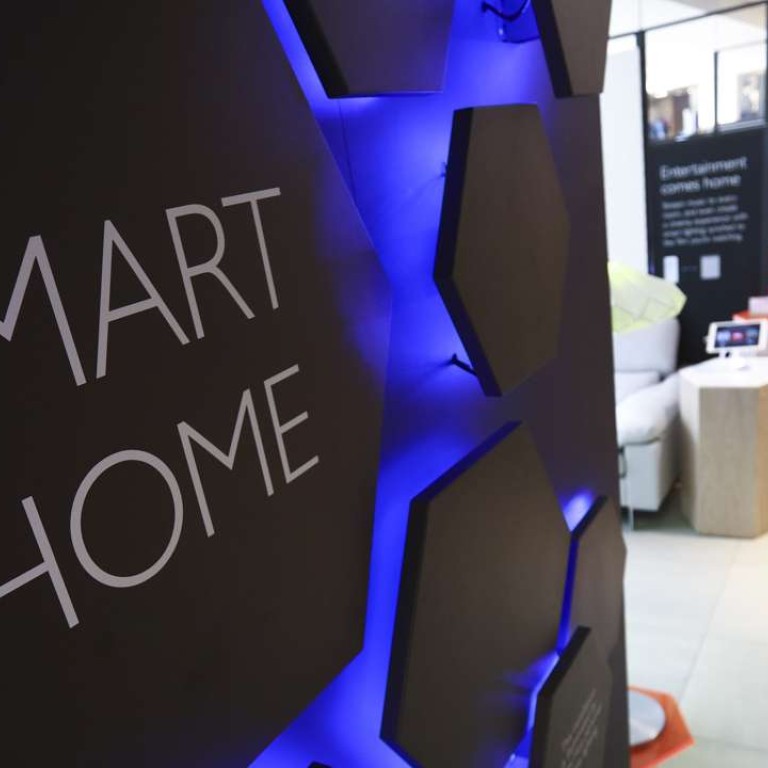
New | Hong Kong needs to bone up on security in drive for smart cities
Governments such as Hong Kong must sharpen their focus on security as they push forward development of smart cities alongside the rapid growth of internet-connected devices, according to Dominic Orr, president at wireless networking company Aruba.
As the adoption of the Internet of Things (IoT) -- the umbrella term for devices ranging from traffic monitors to temperature sensors connected to the internet -- grows, security must be considered from the start to protect data and networks.
“Security has to be built in from day one. Security that is retrofitting… is usually not a tight system and also it’s a lot of work,” Orr said. “And [for] any large government-sponsored deployment I advise people to have their security architecture designed from day one, day zero.”
Orr said that while most IoT projects were in the pilot stage, meaning overall security risks were low, this area will grow in the next 10 to 15 years and cannot be ignored.
Technology research firm Gartner has estimated that 6.4 billion connected things will be in use worldwide this year, up 30 per cent from 4.9 billion last year. About 5.5 million new things will get connected every day, it said.
These things are not general-purpose devices, such as smartphones and personal computers, but a dedicated network of objects that include vending machines, jet engines, connected soap dispensers and myriad other examples that track, store and send data.
Total spending on IoT devices this year is forecast to reach US$1.4 trillion, up from last year’s estimated US$1.2 trillion.
Smart cities deploy information and communications technology solutions in three or more functional areas of a city government, according to research firm IHS. Examples include mobile and transport, energy and sustainability, physical infrastructure, governance, and safety and security.
Smart cities are emerging in response to an increasingly urbanised world dealing with scarce resources, along with the desire to improve efficiency.
Interest in smart cities has received government backing in Hong Kong with a promise in this year’s policy address to expand free wifi services and open government data to mobile app developers.
Last Wednesday, Hong Kong chief executive Leung Chun-ying announced a co-operation with China Smart City Development Alliance to develop business exchanges on related technology.
Wireless networking firm Aruba was acquired by Hewlett Packard last year for US$3 billion. Aruba now sits within HP’s Enterprise Group to complement its wired networking business as companies demand a mobile first infrastructure.
Orr, a Macau native who has spent most of his career in the United States, was in Hong Kong for the Internet Economy Summit last week to discuss the opportunities for IoT.
He pointed out that security risks had moved on from the need for stronger passwords to prevent hacks as connected devices such as smart fridges and thermometers opened up a new front.
“How can you protect the Internet of Things side because [it] includes dumb devices… so we have to worry constantly profiling what kind of devices are out there and saying ‘this traffic is coming from a thermometer, why are you asking for a big file download’,” Orr said.
While security was an ongoing concern, there is large potential for what can be learned from IoT and the ability to share intelligence, he added.
Giving the example of an airport, he said airports in different cities would be able to optimise their operations by analysing usage patterns and sharing the trends that are found.
One area of IoT that Orr said is currently untapped is the issue of creating a hybrid network to combine old technology, such as security systems or temperature control systems that are not standardised, with new technology.
“I don’t believe there is enough attention and enough talents spending energy on this,” he said. “All the start-ups and so on want to build the next shiny thing and to be coming back to a building like this and retrofitting what has been installed for the past 20 years is not very shiny.”

